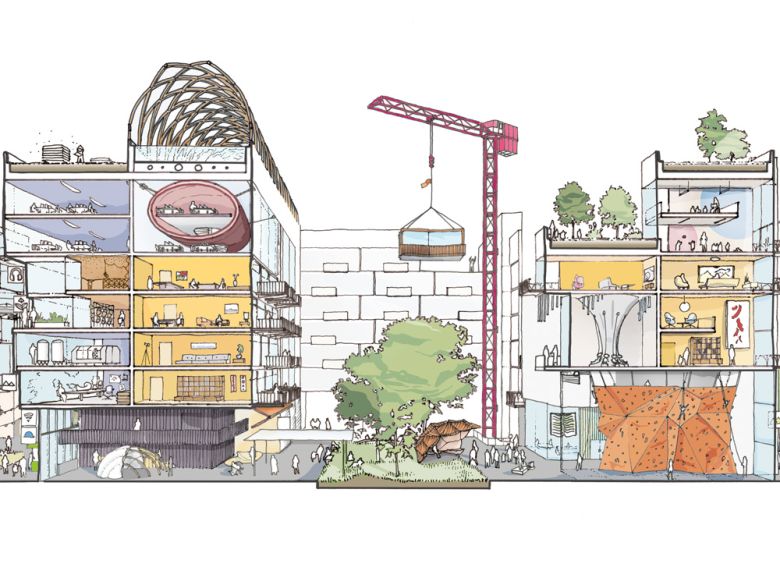From underground delivery to universal Wi-Fi and more.
A look at five of the smart city technologies Sidewalk Labs LLC is offering Torontonians.
Heated sidewalks and bike paths
The Pitch: Installing 1,200 square metres of heated sidewalk and 1,590 square metres of heated bike paths, all powered by hydronic heating, circulating warm fluid just beneath the pavement surface using the neighbourhood’s thermal energy grid. The paths will be connected to real-time weather forecasts and power on two to three hours in advance of a snowstorm. The system will reach two to four degrees Celcius, capable of melting snow, and shuts off whenever the pavement is dry.
The precedent: Although hydronic-heated sidewalks are in operation everywhere from Reykjavik and Akureyri, Iceland, to Bill Gates’ driveway, nothing compares with the scale of Sidewalk’s idea.
Underground freight delivery
The Pitch: Delivering “smart containers” 24/7 through underground tunnels using electric-powered drone vehicles coordinated at a central hub, which will also handle waste, storage and a borrowing service, thereby cutting truck traffic by 72 per cent. The containers can only be opened with a code given to the recipient.
The precedent: Amazon.com Inc. patented a very similar underground concept in 2017, complete with tunnels and drones, but hasn’t built it. “There isn’t really somewhere that does something that has everything we imagined,” said Rohit Aggarwala, Sidewalk Labs’ head of Urban Systems. “There are many companies and campuses that deliver to a central location. The challenge is that the re-sorting and final delivery is expensive, which is where the robots come into play.”
Tall wooden buildings
The Pitch: Using cross-laminated timber (CLT), as well as glulam beams (three to nine layers of timber glued together) to construct buildings to a top height of 30 storeys. Initial plans call for six million square feet of development, with a potential to reach 33 million square feet. Sidewalk Labs believes the panels and glulam beams are as fire-resistant as concrete or steel. Another promise is to make 40 per cent of all housing units family-sized (two bedrooms or more).
The precedent: So far, a wooden neighbourhood only exists in Sidewalk Labs’ imagination, but the tallest wooden building in the world is the Mjøstårnet in Brumunddal, Norway, at 85.4 metres. It was built using CLT and was completed in March.
Ubiquitous Wi-Fi
The Pitch: Partnering with telecommunications companies to build a super-Passive Optical Network, which allows for greater connectivity and longer reach per each fibre-optic cable. The network will use “holistically configured routes that allow access for authorized uses only.”
The Precedent: Many cities in the world already offer near universal Wi-Fi access in their public spaces, some only for a few hours at a time. For example, Tel Aviv and Jaffa, Israel, have had free Wi-Fi since 2013.
The Scheduler
The Pitch: Using “tenant temperature preferences, operating budgets, building occupancy, weather forecasts and real-time energy prices” to change air conditioning, ventilation, blinds, lighting, plugs and computer use. The “Office Scheduler” would not replace existing building operating systems, but work in concert with them, and keep tenants updated on what’s going on in particular rooms, while allowing them to override it if need be.
The Precedent: There isn’t anything comparable on this level, but it isn’t dissimilar to technologies such as smart-tech thermostats. “We are a sister company of Google and their Nest is an inspiration in many respects,” Aggarwala said. “There are already lots of companies using scheduling data to program their air conditioning.”
Source: Financial Post
Author: Sokic Nicholas
